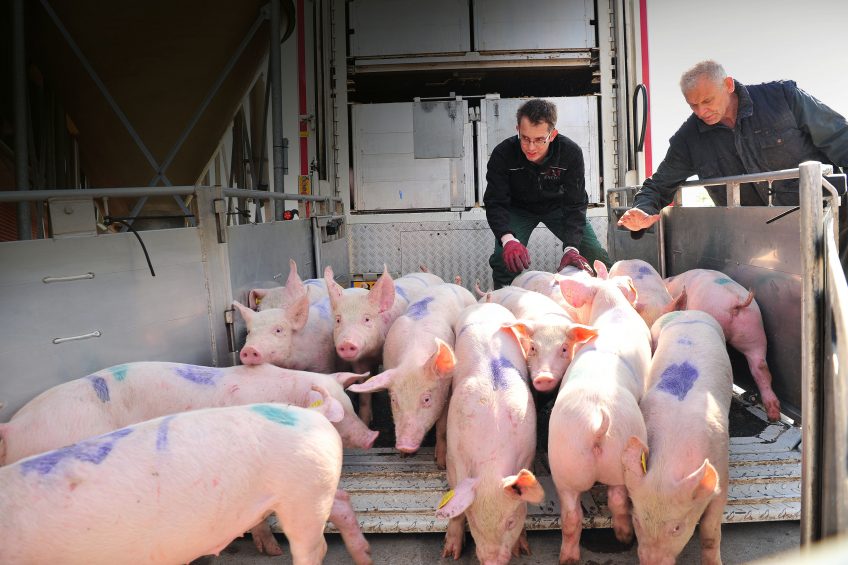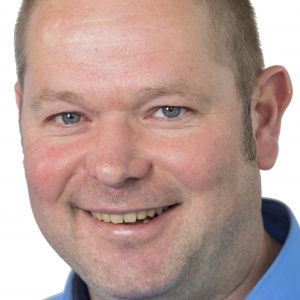Yielding better returns with SPF pigs

Pigs with a high health status render better economic results as a healthy animal reduces the need for antibiotic use and increases the yield. However, staying free of germs is more difficult than becoming free.
Healthy livestock production is becoming increasingly important, particularly as antibiotic use in livestock farming needs to be reduced in order to prevent the development of antimicrobial resistance. To facilitate the reduction in antibiotic use there needs to be a stronger focus on healthy animals in a germ-poor environment.
For German pig farmer and former veterinarian, Gerrit Bronsvoort, producing pigs which are free of germs such as Porcine Reproductive and Respiratory Syndrome (PRRS), Mycoplasma hyopneumoniae (M. hyo) and Actinobacillus pleuropneumonia (App) is the only way to reduce antibiotic use. He has gained a lot of experience in pig farms with a high health status, also known as Specific Pathogen Free (SPF). In East Germany, where Bronsvoort worked as a veterinarian, PRRS is the main driver for pushing towards a high health status herd.
In neighbouring country, the Netherlands, the presence of an App strain, and sometimes swine dysentery, is a reason to replace the sow herd with SPF animals, says veterinarian Rick Janssen. In his experience, PRRS and M. hyo can usually be brought under control. A high animal health status offers many advantages as the animals perform better and that is reflected in better financial results. The biggest advantages are to be found in the finishing phase through an improvement in feed conversion, higher growth rates and lower mortality rates.
According to Bronsvoort, SPF yields an annual benefit of more than € 350,000 on a farm with 1,000 sows, with more than € 250,000 of this being taken in the finishing phase.
Despite the benefits of SPF, only 5-7% of Dutch sow farms are free from App, PRRS and M. hyo, estimates Janssen. Around 90% of Dutch pig farms are infected with App. In addition, M. hyo is present in 70 to 80% of the farms, with 80 to 90% of farms being infected with PRRS.
Replacing the sow herd
Complete depop-repop of the herd is the fastest and most secure way to become free, and for App the only way, as this bacteria can’t be removed from the sows. In this way, the complete sow herd is replaced by SPF sows. After the last animals have been removed, the entire facility is cleaned and disinfected. The pig houses then need to be left empty for at least four weeks before being repopulated with SPF animals. This, however, requires a substantial investment. The costs vary considerably per company and are roughly between € 200 and € 300 per sow. In addition, adjustments to pig houses are sometimes necessary to improve biosecurity. In this process, the highest cost item is the period when the pig houses are empty and there no proceeds from the sale of animals. In addition, the value of the old sow herd depreciates but this can be partly overcome by allowing the younger sows to be produced elsewhere.
“The bottleneck is that banks often don’t have enough confidence in the investment. The bank believes that the risk of reinfection is too high. In addition, there is no collateral for lending, which is unfortunate, because farms that have taken the step can easily demonstrate improved profitability,” says Janssen. The size of this increased profit depends on the starting situation. If there are a lot of problems with App and PRRS, then depop-repop can mean a big step forward.
Importance of good cooperation
For multiplication farms, the benefits mainly depend on how much extra SPF piglets yield compared to before. “Pig producers who already have some experience with SPF piglets know the advantages and appreciate SPF piglets at a higher price than those who are just starting with them.” In Janssen’s experience, good cooperation and agreements between the multiplier and the pig producer increases the chances that both can share the extra return.

Becoming free is easier than staying free however, as most SPF farms sooner or later have a reinfection. PRRS and M. hyo are known to move through the air over great distances. This means that in areas with a high density of pig farms, air filters are necessary to prevent contamination via the incoming air. In addition, a high-pressure system is required in the central corridor to prevent air from being sucked in via an open door, for example during the delivery of animals. The costs of this is approximately € 1 per piglet.
Delivery of animals poses a risk
It is important to vaccinate the sows against PRRS. This offers the animals a lot of protection if a virus does enter. Due to the higher immunity of the sows, a higher influx of the PRRS virus is needed for an infection. The supply of new sows heightens the risk of PRRS entering the farm. Therefore, good quarantine and adjustment measures are necessary when new animals enter the farm.
Purchasing these sows also poses the greatest risk for the introduction of App. The bacteria enters the farm almost exclusively via the supply of animals. However, as it can only spread a few meters through the air this makes it possible to isolate the germ, with the correct measures, before an opportunity arises to transfer to other animals.
It is impossible to prevent germs from entering the farm again, says pig farmer Geert Beltman from his own experience. His SPF farm became infected with PRRS, but with a thorough approach it succeeded in becoming virus free again, see box – Making the switch to SPF.
Multi-site farms with separate locations for sows and nursery pigs, weaned piglets and finishing pigs, such as Beltman operates, makes the transfer between different animal groups impossible. Given the limited space available in countries such as the Netherlands, however, makes this not so readily available for many producers. For instance, a three-week system or a 4-week system would aim for a similar effect. Due to the clear cut between age groups, the chance that an infection continues to infect the herd is much smaller.
Making the switch to SPF
Director Geert Beltman of Molenaars Breeding farm in Markelo, the Netherlands, is happy with the switch to a SPF sow herd. “Every day I get a lot of satisfaction from the decision I made to replace the old sow herd with a new SPF sow herd,” he says. At the end of January 2013 the first 1,200 sows with a high health status populated the pig houses on the farm.
With the switch to an SPF sow herd, the pig farmer expanded his operation from 1,200 to 3,000 sows. The main motivation to switch to a farm with a high health status was the presence of App-type 2 and type 9 in the old sow herd. This made piglet vaccination a necessity to protect the animals against the lung disease. In addition, the old sow herd was infected with Bordetella bronchiseptica.

Those germs are no longer present and the farm is free of PRRS and App. In spite of the strict biosecurity measures that Beltman has used since the introduction of the SPF sow herd, his farm was confronted with a PRRS outbreak in October 2015. Since then, PRRS-related problems have periodically materialised with animals testing positive for the presence of the field virus. That undermined the quality of the piglets and Beltman was committed to becoming PRRS-free again.
At the end of 2016, studies showed that only the same strain was present that entered the farm in October 2015. This means that the biosecurity on the farm is good, otherwise more PRRS strains would have been. In consultation with veterinarian Rick Janssen, an action plan was drawn up. In the first place, Beltman stopped the delivery of gilts for 200 days. In addition, 21 day old piglets were temporarily removed and all sows and piglets were vaccinated intensively against PRRS. This approach, originating from the US, turned out to be successful in combination with tightened biosecurity and management practises in the nursery. “It was quite a job, but since April last year no field viruses have been found. So I’m very happy,” the pig farmer concludes proudly.











